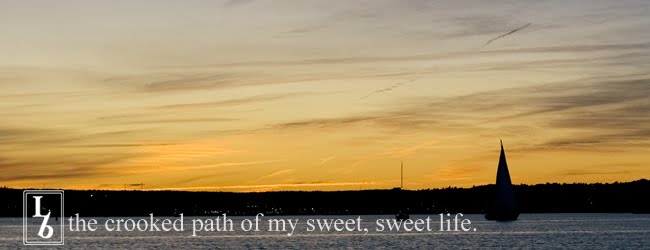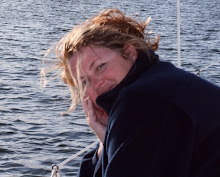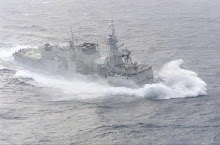I had some people request instructions on how I did the newspaper article for my “38 Years of Tradition”, so here goes. Keep in mind, there are probably many other ways to achieve the same effect, but I hope this helps.

Create a new document to your desired size.
Choose your colours:
If you look closely at a newspaper, you will note that it is not black and white, so choosing colours is an important step in making it realistic. For the background of the paper I used R231/G223/B218 which actually looks quite pink to the eye, and R41/G31/B25 for a warm black colour for text.
Make a selection for the size you want your newspaper article to be and fill the selection with the colour you select for your paper.
Photos:
If you’re using a photo as part of your newspaper article, it needs to be monochrome to achieve the look of newspaper.
Open your photo and work on it in a separate document.
I played with the channels until I achieved the desired results (I am pretty visual and do things generally until it looks good to me).
To make the photo blend with the warm tones of the newsprint, create a new layer with the mode selected to “colour” and fill this layer with the print colour you chose earlier.
Now you can flatten your photo and drag into your newspaper document. You can resize your picture as you wish, but I used a photo mask layer and then clipped the photo onto the mask. (I learned this in Jessica Sprague’s class and will forever be doing this!)
Now it’s up to make it your own. You can add vertical rules if desired and add text as desired.
I chose not to use vertical rules and to make my “article” simple by adding text with the colour I selected above. I decided on Times New Roman as the font since many newspapers use that particular font. I added a headline as well as a byline.
Have you ever noticed that ink transfers from one page to the next on newsprint? Now – here’s what makes the article look real…it’s simple!
Select all of the text layers and copy into a new layer. Making sure the new layer is selected flip horizontal (edit>transform>flip horizontal). It will look like a mess – don’t panic! Now, lower the opacity of this layer to about 9% (or until it looks good). It may even look a little better if you nudge this layer around – play a bit and see what looks good for you.
Serrated Edge:
Newspapers have a serrated edge usually on the top. I actually design/edit a tabloid paper that the serration is on the outside edges, so again, it’s up to you where you would like to place it.
Create a new brush in the brushes pallet. Diameter: 15 / Hardness: 100% / Spacing: 100% / Angle: 90 / Roundness: 40% (the angle of 90 degrees is suited for a serration on the top of the page, if you want a serration down the side of your article change it accordingly)
Create a new layer and brush with the paper colour. Use the move tool to position it where you like.
Torn Edge:
A flattened copy is required to do this, so I copied all the layers and flattened them. I tend to be a little paranoid and always keep my layers intact just in case I decide I want to change something.
Using the flattened layer make a selection with the lasso tool to draw your tear. Draw well outside the edges that will not be torn (the selection will automatically keep those edges intact).
Once you have the selection you want, reverse your selection and delete. Your paper will now have a torn edge.
Drop Shadow:
Make a copy of the torn paper layer and fill with warm black colour. This layer should be below your paper layer. Nudge this layer a little to left or right and down and then use the Gaussian Blur (filter>blur>) approx. 3 px. Set layer mode to Multiply and reduce the transparency of the shadow to approx. 65% (whatever looks good to you).

Create a new document to your desired size.
Choose your colours:
If you look closely at a newspaper, you will note that it is not black and white, so choosing colours is an important step in making it realistic. For the background of the paper I used R231/G223/B218 which actually looks quite pink to the eye, and R41/G31/B25 for a warm black colour for text.
Make a selection for the size you want your newspaper article to be and fill the selection with the colour you select for your paper.
Photos:
If you’re using a photo as part of your newspaper article, it needs to be monochrome to achieve the look of newspaper.
Open your photo and work on it in a separate document.
I played with the channels until I achieved the desired results (I am pretty visual and do things generally until it looks good to me).
To make the photo blend with the warm tones of the newsprint, create a new layer with the mode selected to “colour” and fill this layer with the print colour you chose earlier.
Now you can flatten your photo and drag into your newspaper document. You can resize your picture as you wish, but I used a photo mask layer and then clipped the photo onto the mask. (I learned this in Jessica Sprague’s class and will forever be doing this!)
Now it’s up to make it your own. You can add vertical rules if desired and add text as desired.
I chose not to use vertical rules and to make my “article” simple by adding text with the colour I selected above. I decided on Times New Roman as the font since many newspapers use that particular font. I added a headline as well as a byline.
Have you ever noticed that ink transfers from one page to the next on newsprint? Now – here’s what makes the article look real…it’s simple!
Select all of the text layers and copy into a new layer. Making sure the new layer is selected flip horizontal (edit>transform>flip horizontal). It will look like a mess – don’t panic! Now, lower the opacity of this layer to about 9% (or until it looks good). It may even look a little better if you nudge this layer around – play a bit and see what looks good for you.
Serrated Edge:
Newspapers have a serrated edge usually on the top. I actually design/edit a tabloid paper that the serration is on the outside edges, so again, it’s up to you where you would like to place it.
Create a new brush in the brushes pallet. Diameter: 15 / Hardness: 100% / Spacing: 100% / Angle: 90 / Roundness: 40% (the angle of 90 degrees is suited for a serration on the top of the page, if you want a serration down the side of your article change it accordingly)
Create a new layer and brush with the paper colour. Use the move tool to position it where you like.
Torn Edge:
A flattened copy is required to do this, so I copied all the layers and flattened them. I tend to be a little paranoid and always keep my layers intact just in case I decide I want to change something.
Using the flattened layer make a selection with the lasso tool to draw your tear. Draw well outside the edges that will not be torn (the selection will automatically keep those edges intact).
Once you have the selection you want, reverse your selection and delete. Your paper will now have a torn edge.
Drop Shadow:
Make a copy of the torn paper layer and fill with warm black colour. This layer should be below your paper layer. Nudge this layer a little to left or right and down and then use the Gaussian Blur (filter>blur>) approx. 3 px. Set layer mode to Multiply and reduce the transparency of the shadow to approx. 65% (whatever looks good to you).
I hope this helps. I have assumed that some steps are known to whoever would want to achieve this effect. If anyone needs more complete instructions contact me and I’d be more than willing to help out.





BRILLIANT! Thanks SO much for sharing this!
Thank you for sharing. It's very professional and your instructions are great. At least I understand them now. Thanks to Jessica.
Lisa, you are awesome! Love your layouts (I especially looove your macro photo challenge layout, but all are wonderful!) Thanks for sharing your digital knowledge! See you on the Spraground!
Thank you for taking the time to prepare the directions!
Liaa - thanks for the tutorial. Beautiful blog by the way!
Post a Comment